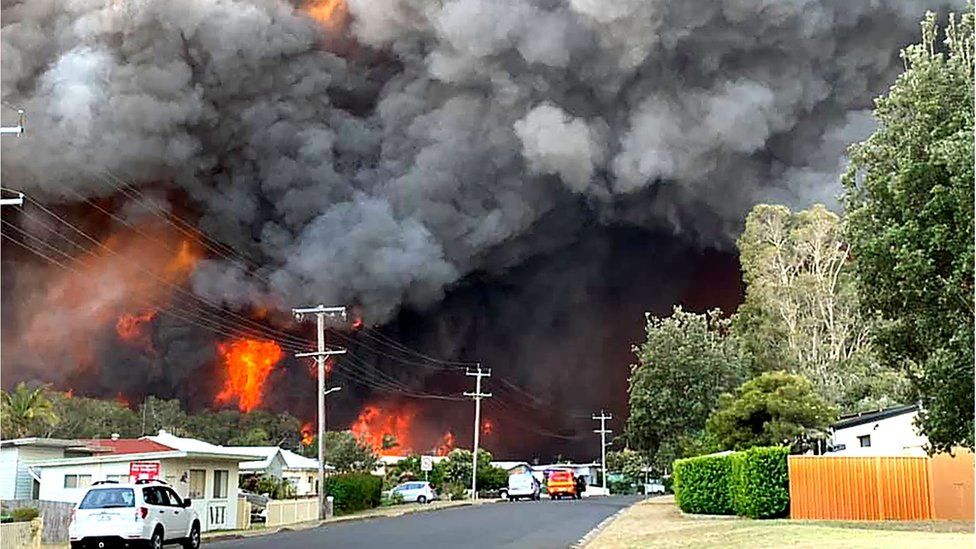Navigating Residential Property Safety And Security: Comprehending the Significance of a BAL Report
Navigating Residential Property Safety And Security: Comprehending the Significance of a BAL Report
Blog Article
Ensuring Shrub Fire Protection Via Appropriate BAL Record Analysis
In the realm of bush fire defense, the careful evaluation of Bushfire Strike Level (BAL) reports stands as a foundation for securing properties against the terrible impact of wildfires. With ecological factors and home qualities playing substantial duties in identifying the level of threat, a comprehensive understanding of BAL scores ends up being crucial. The real significance exists not simply in comprehending these records yet in deciphering them efficiently to formulate customized fire security techniques. By diving right into the importance of BAL record analysis, we reveal a realm where informed decisions pave the course in the direction of strengthening residential property safety and durability in fire-prone regions.
Understanding Bushfire Strike Degree (BAL)
In the realm of bushfire protection, understanding the Bushfire Assault Degree (BAL) is critical for guaranteeing efficient mitigation methods. Comprehending the BAL rating of a home is critical for building owners, policymakers, and builders to apply ideal measures to secure versus bushfire dangers.

Relevance of BAL Report Evaluation
A necessary facet in bushfire protection planning involves the complete analysis of BAL records to assess the potential dangers and determine appropriate mitigation techniques. BAL records provide important information about the prospective influence of bushfires on a home based on different variables such as plant life kind, range to potential fire dangers, and incline of the land. Analyzing these records with accuracy is critical in establishing reliable bushfire defense measures tailored to the details threat account of a residential property.
Implementing Fire Protection Measures
Applying reliable fire protection steps is critical for guarding properties in bushfire-prone areas. This includes cleaning combustible plants, such as completely dry fallen leaves and branches, within a certain radius of the building.
Additionally, having a well-kept and adequate water supply, such as a tank or swimming pool, can assist firemens in their efforts to secure the residential or commercial property. BAL Report. In general, applying a mix of these fire protection steps can considerably enhance the opportunities of securing homes during bushfire events.
Mitigating Dangers in Fire-Prone Locations
To fortify buildings against bushfire threats, a critical emphasis on mitigating risks in fire-prone locations is imperative. One critical element of danger mitigation is preserving defensible area around residential or commercial properties by removing flammable greenery, ensuring ample spacing in between frameworks and trees, and utilizing fire-resistant landscape design techniques.
In addition, creating or retrofitting structures with fire-resistant products and making sure correct upkeep of roofings, rain gutters, and external cladding can significantly boost the residential or commercial property's resilience to bushfires. Practicing a bushfire and developing emergency plan with all residents, consisting of emptying procedures and interaction techniques, is also vital in mitigating risks effectively. By embracing an aggressive technique to take the chance of reduction in fire-prone locations, homeowner can better shield their properties and improve total bushfire preparedness.
Ensuring Home Security and Strength
Making certain the safety and security and resilience of homes in fire-prone areas needs a steadfast dedication to robust safety nets and strategic planning. Residential or commercial property safety and security starts with applying reliable measures to decrease fire risks. This includes keeping a defensible room around the home by removing flammable vegetation, making sure proper upkeep of roof coverings and gutters, and making use of fireproof structure materials. Normal maintenance of firefighting tools, such as tubes and lawn sprinkler, is likewise essential to residential property resilience.
Strength, on the other hand, involves the capability of a residential or commercial property to endure and recuperate from my review here a bushfire. By proactively attending to these aspects, property owners can much better protect their properties and loved ones from the hazard of bushfires.
Conclusion
In verdict, guaranteeing bushfire protection via appropriate BAL record analysis is essential for recognizing the degree of danger positioned by bushfires and applying required fire security actions. By mitigating dangers in fire-prone locations and guaranteeing residential property security and resilience, areas and individuals can better prepare for and react to bushfire occasions. It is important to focus on fire precaution to safeguard lives and property in these risky atmospheres.
In the realm of bush fire defense, the thorough analysis of Bushfire Attack Degree (BAL) reports stands as a foundation for securing residential properties versus the damaging impact of wildfires (BAL Report). Understanding the BAL rating of a building is important for home policymakers, owners, and go to the website builders to execute suitable measures to safeguard versus bushfire dangers

BAL records offer important information regarding the prospective impact of bushfires on a residential property based on numerous factors such as plant life kind, distance to potential fire risks, and slope of the land (BAL Report). On the whole, executing a mix of these fire security procedures can significantly increase the opportunities Discover More of protecting residential or commercial properties during bushfire occasions
Report this page